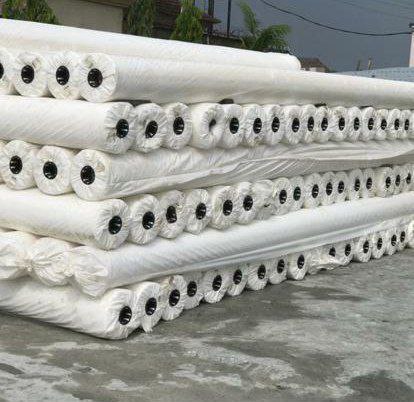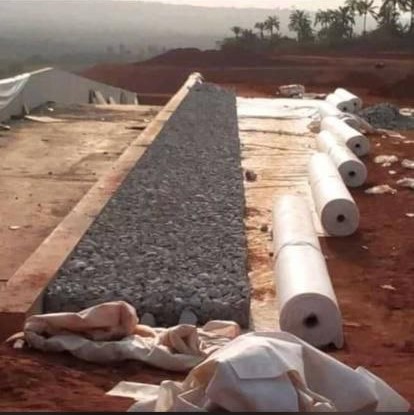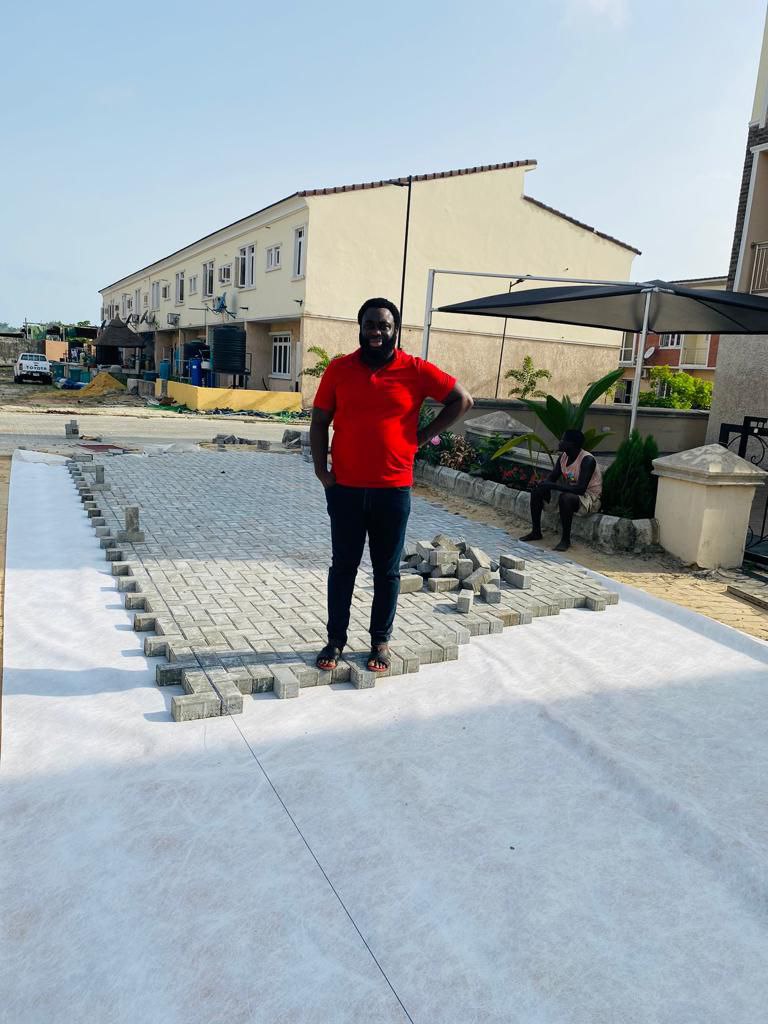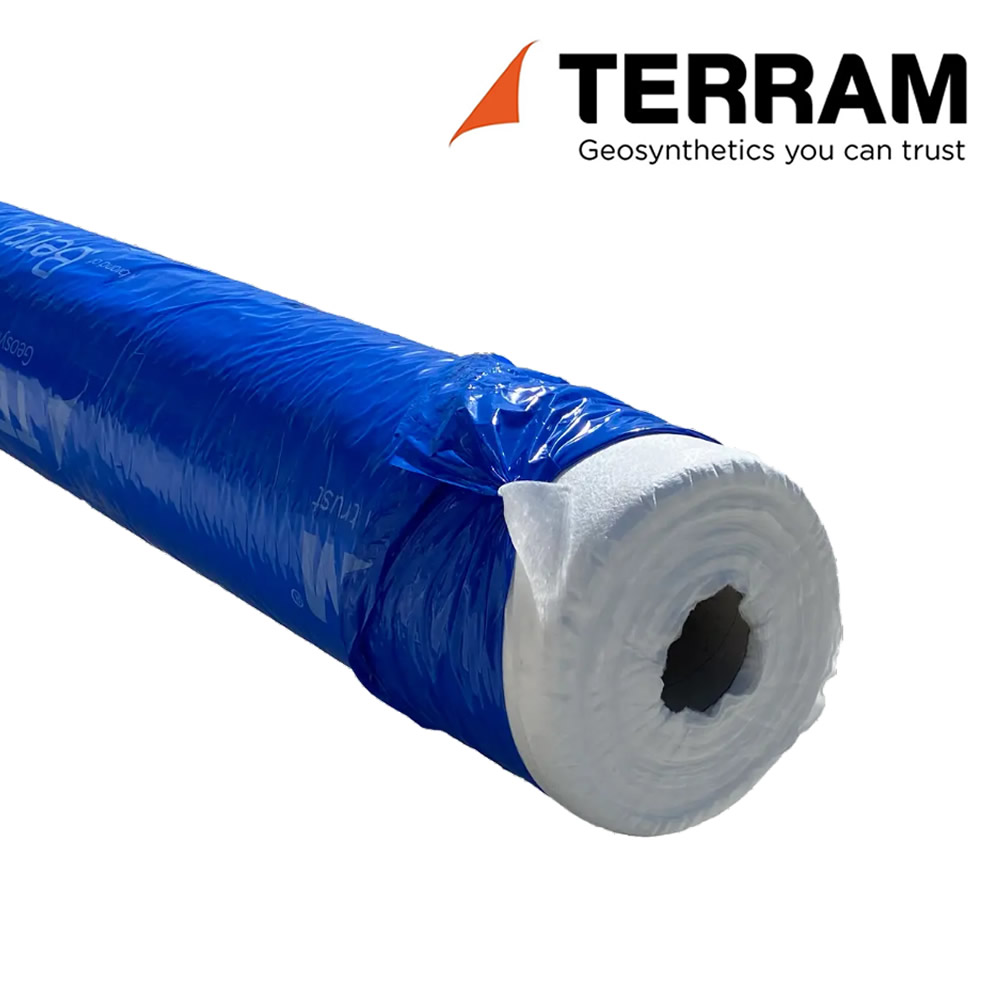Geotextiles
About Geotextiles
Geotextiles are permeable fabrics made of synthetic fibers, such as polyester, polypropylene, or nylon. They are widely used in civil engineering and construction projects to provide separation, filtration, reinforcement, and drainage. In this blog post, we will focus on two specific type of geotextile: nonwoven geotextiles and woven geotextiles. We will introduce the products and its usage, highlight the various ways it can be used, and make the post explanatory new users.


Nonwoven geotextiles are made of synthetic fibers that are randomly laid and thermally bonded together. They are widely used in various civil engineering and construction projects, such as roads, railways, embankments, landfills, and erosion control. They offer numerous benefits, including cost-effectiveness, durability, flexibility, and ease of installation.
One of the primary uses of nonwoven geotextiles is to provide separation between different layers of soil or aggregate. When different materials are placed on top of each other, there is a risk that they will mix together over time, resulting in a weaker and less stable structure. Nonwoven geotextiles act as a barrier between these layers, preventing them from mixing and providing a stable base for the construction project.
Nonwoven geotextiles can also be used for filtration. When water flows through soil, it can carry sediment and other contaminants with it. Nonwoven geotextiles act as a filter, allowing water to pass through but trapping sediment and other contaminants. This is particularly useful in drainage systems, where sediment can clog the system and reduce its effectiveness.
Reinforcement is another important use of nonwoven geotextiles. When soil or aggregate is compacted, it can be subject to lateral forces that can cause it to deform or shift. Nonwoven geotextiles can be used to reinforce these materials, increasing their stability and strength. This is particularly useful in applications such as embankments, where the lateral forces can be significant.
Nonwoven geotextiles can also be used for erosion control. When water flows over soil, it can erode the surface, causing damage to the environment and potentially undermining structures. Nonwoven geotextiles can be used to stabilize the soil and prevent erosion. They can also be used in conjunction with other erosion control measures, such as riprap or vegetation.
In addition to these primary uses, nonwoven geotextiles can also be used for a range of secondary applications, such as cushioning, protection, and drainage. They are versatile and flexible, making them an ideal solution for a wide range of construction projects.
For new customers, nonwoven geotextiles offer numerous benefits over traditional construction methods. They are cost-effective, durable, and easy to install, making them an attractive option for projects of all sizes. They also offer numerous environmental benefits, such as reducing soil erosion and improving water quality.
NON WOOVEN GEOTEXTILES
Nonwoven geotextiles are a versatile and effective solution for a wide range of construction projects. They provide separation, filtration, reinforcement, erosion control, and numerous other benefits. They are easy to install, cost-effective, and durable, making them an attractive option for new customers. If you are planning a construction project, consider using nonwoven geotextiles to improve its performance and longevity.



Extensive Explanation on Wooven Geotextiles
Characteristics of Woven Geotextiles
Woven geotextiles are known for their high tensile strength, durability, and excellent filtration properties. The individual strands of synthetic fibers are woven together to create a uniform structure that can withstand high loads and stresses. Woven geotextiles are typically manufactured in a range of strengths and sizes to meet the specific needs of different construction projects.
One of the primary characteristics of woven geotextiles is their excellent filtration properties. The open structure of the woven fibers allows water to pass through while retaining soil particles and other contaminants. This makes them an ideal choice for applications such as drainage systems, erosion control, and road construction.
Uses of Woven Geotextiles
Woven geotextiles have numerous applications in civil engineering and construction projects. Here are some of the primary uses of woven geotextiles:
Separation: Woven geotextiles are commonly used to separate different layers of soil or aggregate. They prevent the mixing of materials and provide a stable base for the construction project.
Reinforcement: Woven geotextiles can be used to reinforce soil or aggregate and increase their stability and strength. This is particularly useful in applications such as embankments, where lateral forces can cause deformation and shifting.
Filtration: Woven geotextiles are excellent filters, allowing water to pass through while retaining soil particles and other contaminants. This is useful in drainage systems, erosion control, and road construction.
Erosion control: Woven geotextiles can be used to stabilize soil and prevent erosion. They are particularly effective in slope stabilization and shoreline protection.
Protection: Woven geotextiles can be used to protect sensitive surfaces such as liners, geomembranes, and concrete from damage due to soil movement, abrasion, or puncture.
Benefits of Wooven Geotextiles
Woven geotextiles offer numerous benefits over traditional construction methods. Here are some of the primary benefits of woven geotextiles:
Durability: Woven geotextiles are designed to withstand high loads and stresses, making them durable and long-lasting.
Cost-effectiveness: Woven geotextiles are cost-effective compared to traditional construction methods such as concrete or asphalt.
Versatility: Woven geotextiles can be used in a wide range of applications, making them a versatile solution for different construction projects.
Environmental benefits: Woven geotextiles can reduce erosion, improve water quality, and protect the environment.
